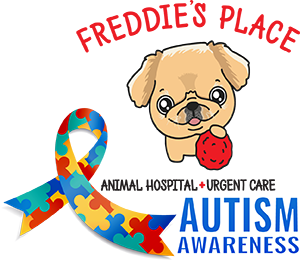It seems like EVERYONE has their paw in making food for your pets these days. Big names like Rachel Ray, Cesar Millan, Martha Stewart and Ellen all branded food for your fur buddies that you can find at your local grocery or pet store. Its pretty cool to imagine Martha Stewart concocting a special recipe for Rover in her home kitchen, isn’t it!!! (I’m pretty sure that’s not what really happens and I’m willing to bet she doesn’t taste test it either).
The real and important question about these endorsed kibbles and bits is, are they any better than the cookie cutter brands that we’ve seen for decades? Are they healthier or do they use better ingredients than the house brands from a PetCo or PetSmart? In fact… do we even really know what makes a dog food “better”? Do brands even taste different to your pets? Can they tell one brand from another?
Feeding your fur buddies is a multi-billion dollar market and how they regulate the labeling and packaging may surprise you AND IT’S IMPORTANT. What you THINK you’re feeding your fuzzy kids and what they are actually eating might not be the same thing. Today’s FreddieSez is going to break down the myths and mystery’s of your pets food and give you a fighting chance to pick a winner based on what you REALLY see, not what they WANT you to think you’re seeing. We want you to choose wisely, based on price AND whats really in the food you’re buying.
So… LET’S GET BUSY breaking down the lingo of packaging and labels!
Lets be honest, how many times have you picked up something for YOURSELF based strictly from the picture you see on the box? I’m betting in a bunch. And how many times have you been disappointed when you tried the product because it doesn’t live up to the marketing hype? Sometimes, maybe lots of times. Marketing is purposeful and profitable just for that reason.
Guess what… you could be getting fooled with your pets food, as well and you have no way of knowing. Clever pictures, words and phraseology is drawing you in to buy something that the manufacture knows you’re never going to sample. I’m not saying its all bad, I’m saying that not all pet foods are created equal and there is nobody eating it that is going to speak up and tell you when its lousy or not as good as the package pictures/description.
When it comes to how pet food is regulated, there are four basic rules in play for a product name on a package. Since the name is what draws you in, the AAFCO (American Feed Control Officals) makes the rules very tight so that the manufacture can’t fib, fabricate, bait & switch or flat out lie about the product their package marking. After all, its the fancy outside that grabs and often closes the deal.
Here are the rules surrounding the naming conventions of your pets food, I think it might surprise you!
– The 95 Percent Rule: At least 95% of the product must be the names ingredient. Examples would be if a food were advertised as “Chicken Dog Food” or “Tuna Cat Food” it must include 95% chicken or tuna to carry those labels. Also, the named “MAIN” product must be at least 70% of the total volume when you count added water. You may ask, what about the other 5%? Well the AAFCO requires that it be mainly vitamins and minerals with trace amounts of other ingredients. Obviously, anything in the 95% Rule is going to be high quality.
– The 25 Percent Rule: When you see clever names like “Salmon Dinner for Cats” or “Lamb and Noodles Entree”, this is an example of marketing around the 25% Rule. If the named ingredients comprise at least 25 percent of the product (not counting the water for processing), but less than 95 percent, the product name must include a qualifying term, such as dinner, entrée, or platter. Counting the added water, the named ingredients still must comprise 10 percent of the product. If more than one ingredient is included in a “dinner,” the combination of the named ingredients must total 25 percent of the product and be listed in the same order as found on the ingredient list.
Confusing? Not really… its lesser quality. Anywhere from 25 but less than 95% of the product is the ingredient they are highlighting in the name. When they fancy it up with “Dinner” or “Entree” they have added more filler ingredients and less of the main product.
– The “WITH” Rule: If the label reads “Dinner with Chicken”, then it only needs to have 3% of the “WITH” ingredient in the product, total. Adding one word – WITH – changes the entire game and takes the quality tumbling down dramatically. This is why its critical to pay keen attention to the labels before you buy. One “WITH” can mean you’re feeding your favorite fur kid a bag of junk.
– The FLAVOR Rule: This is NOT a trip to FlavorTown. The FDA states that if the label reads “Beef Flavor” food, then a specific percentage of the named ingredient (beef in this case) is not required BUT a the product must contain an amount sufficient to be able to be detected. Again… who is tasting this to assure that you can detect the beef and who is asking your pets if they can taste it? In this example the word “FLAVOR” and the word “BEEF” must appear in the same size, style, font and color on the label. I guess that is so you know what your pets will be tasting when you ask them???
Lesson learned in section one… read the package and be sure you know if its 95%, 25%, WITH or FLAVOR Rule food. Choose wisely… your pet is counting on it.
Separate from the labeling rules above are the guidelines for Natural, premium, gourmet and organic labels. Again, the AAFCO has broken down another set of commonly used words/definitions into manufacturing categories. Get familiar with what these terms mean (or don’t mean) if you want assure you’re getting the best quality and most value for your money.
Lessons learned in section two: Premium and Gourmet have no guidelines or standards. REAL THE INGREDIENTS to determine if you’re getting anything more for your money.
So that’s what you look for on the packaging and what it really means. Have you been fooled? I know we have, more than once. How cool does “entree” or “dinner” sound vs. “Beef Dog Food” when in reality the 95% rule makes the simple name the more robust food. Sometimes its what you don’t know that hurts you!
Other “things to know” about the labeling. LOOK for these key ingredients in your pets food, as they are part of a good, balanced and healthy diet
That’s an overview of how to really view the wording on your pet food packaging and what to look for on the nutrition labels. Unless you’ve cracked the code on inner species communications and your fur kids are giving you Yelp reviews on their dinners… all you have is your smarts, plus what you see and read, to guide you on what is best for your buddies to eat. Eating is an important and fun part of their day, so you want to assure you’re getting it right.
As a FreddieSez bonus, for your reviewing pleasure, here are the Top Food Brands by Breed
Top 8 Dry Dog Food Brands per DogFoodManager.com
1) Orijen
2) Blue Buffalo
3) Acana
4) Taste of the Wild
5) WellnessCore
6) Purina ProPlan
7) Hills Science Diet
8) Pedigree
Top 8 Wet Dog Food Brands per DogFoodAdvisor.com
1) Canidae All Life Stages
2) Merrick Classic Canned
3) Ollie Fresh Dog Food
4) Weruva Wet Dog Food
5) Wellness Stews
6) The Farmers Dog
7) Instinct Original Wet Dog Food
8) Whole Earth Farms
Top 8 Dry Cat Food Brands per Hepper.com
1) Purina ONE Tender Chicken
2) Friskies Seafood Sensations
3) Blue Buffalo Wilderness Chicken
4) American Journey Chicken Grain-Free
5) Iams ProActive
6) Rachael Ray Nutrish Chicken Lentils & Salmon
7) Purina Beyond Simply Chicken and Egg Grain Free
8) Taste of the Wild Rocky Mountain Grain Free
Top 8 Wet Cat Food Brands per PetKeen.com
1) Smalls Fresh Cat Food
2) 9 Lives Seafood & Poultry
3) Fussie Cat Canned
4) Tiki Cat Canned
5) Fancy Feast Canned
6) Instinct Original Grain Free Pate’
7) Wellness CORE Signature Selects
8) Tiny Tiger Grain Free
In closing… don’t be star struck by big names and fancy packages when it comes to your kids food. Its not whats on the outside, its the goodies on the inside that your fur kids care about. Whens the last time they asked for a “pawtograph” from a celebrity? Not recently or often, I’m guessing! In the end, it comes down to what your pet likes to eat and you assuring they are fed quality, good tasting and fresh food that assures a continued excellent life experience. Don’t forget to look past the flair and glitz in the marketing and labels, and find the REAL message of whats in the food, to assure you’re getting the best ingredients, quality and biggest bang for your buck when you’re buying food for your special ones.
Thanks for reading FreddieSez! More to come in future blogs as we look at going BEYOND the pet food isles and making home cooked meals for your pets in your own kitchen!!
Got comments or questions for Freddie? Leave us a message below and we’ll get back with you!
Source material for this blog posting:
How to Read a Dog Food Ingredient Label | Petco
How to Read a Dog Food Label – American Kennel Club (akc.org)





[…] Looking Past the Packaging, What’s REALLY in Your Pets Food? – Freddie’s Place (fr… […]